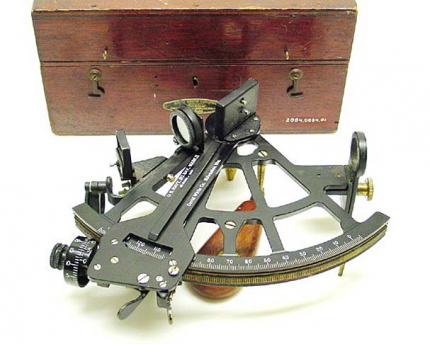Sextant could show astronauts the way home
Astronauts on the International Space Station will soon experiment with a hand-held sextant that could be used as an emergency backup. The idea, according to NASA, is to explore whether astronauts could, in a crisis, use a sextant to “find their way home if communications and main computers are compromised.”
The sextant, along with other experiments, is headed for the International Space Station following the launch of the Orbital ATK Cygnus spacecraft at 4:44 a.m. Eastern time today. It is expected to arrive at the station, orbiting approximately 200 miles above Earth, on May 24. Astronauts will capture the supply spacecraft using a robotic arm.
A sextant is a mechanical instrument with an optical sight. The name comes from the Latin sextus, or “one-sixth,” according to Encyclopedia Britannica online, “for the sextant’s arc spans 60 degrees, or one-sixth of a circle.”
There is a moveable arm that can be adjusted. Using a sextant, sailors would determine the angle between the horizon and a celestial body such as the moon, the sun or another star, and from there they could figure out latitude and longitude.
If astronauts lost communication with mission control, they could use this centuries-old technology to sight angles between the moon or planets and stars and find a way home. This is not the first use of a sextant in space. The Gemini missions in 1965-66 used sextant sightings, NASA noted. And in 1968, James Lovell of Apollo 8 demonstrated in space that a sextant could be used to navigate the spacecraft back to Earth from the moon.
Before the sextant, navigators used a similar device known as a quadrant. Two 18th century inventors are credited with improving and fine-tuning these instruments.
An American, Thomas Godfrey (1704-1749), worked in 1730 on the development of an improved quadrant for determining latitude while living in a home rented from Benjamin Franklin, according to Encyclopedia Britannica.
John Hadley, a British mathematician and inventor (1682-1744), also in 1730, invented a quadrant for measuring the altitude of the sun or another star above the horizon to find geographic position.
Related:
International Space Station gets extension
If you wish to comment, like us on Facebook and tell us what you think.


